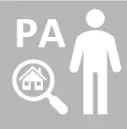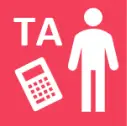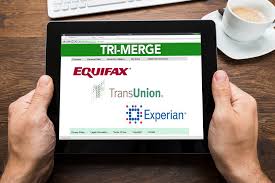Save Our Homes Assessment Limitation
When a homeowner receives a homestead exemption for the first time, the property appraiser assesses the home at its just (or market) value. From that point onward, the annual assessment for the property is limited in how much it can increase. Specifically, the assessment can only rise by a maximum of 3 percent or by the percentage change in the Consumer Price Index (CPI), whichever is lower. This limitation is designed to protect homeowners from sudden spikes in property taxes due to rapidly increasing property values.
This limitation is known as the “Save Our Homes” (SOH) assessment cap. Over time, as the market value of a home increases, the difference between the assessed value (which is capped by SOH) and the just value accumulates. This difference represents the SOH benefit, providing significant savings for homeowners by keeping their assessed value lower than the market value. The relevant legal provisions for this assessment limitation are outlined in section 193.155 of the Florida Statutes.
It’s important to note that even if the market value of a home declines, the assessed value might still increase, but only within the limits set by the SOH cap. However, the assessed value will never exceed the just (or market) value of the property. This ensures that homeowners continue to benefit from the protection of the SOH limitation, keeping property taxes more predictable and manageable even in fluctuating market conditions.
Save Our Homes Portability Transfer
If you are relocating within Florida and moving from one homestead to another, you may be eligible to transfer, or “port,” all or part of the difference in your homestead assessment. This process allows homeowners to carry over the Save Our Homes (SOH) benefit from their previous homestead to their new one. Portability can result in a significantly reduced tax assessment for the new property, leading to lower property taxes overall.
To take advantage of this portability benefit, you must establish a new homestead exemption within three years of January 1 of the year you vacated your previous homestead. It’s important to note that this timeframe is based on when you abandoned your old homestead, not necessarily when you sold it. This distinction ensures that the clock starts ticking on January 1 of the relevant year, giving you a clear window in which to act.
To officially transfer your SOH benefit, you need to file the Transfer of Homestead Assessment Difference (Form DR-501T) along with your homestead exemption application for the new property. The deadline for submitting these forms is March 1. It is essential to complete and submit all required forms and applications to your county property appraiser’s office to ensure you receive the benefit.
In cases where the property appraiser denies your application for the SOH benefit transfer, you have the option to appeal the decision by filing a petition with the county’s value adjustment board. Taking these steps ensures that you can maximize the tax benefits available when moving from one homestead to another within Florida.
Change or Transfer of Ownership
When a change in ownership occurs for a homestead property protected by the Save Our Homes (SOH) assessment cap, the property loses the SOH benefit. As a result, the property will be reassessed at its just (market) value as of the following January 1. This reassessment can lead to a significant increase in property taxes since the SOH cap, which previously limited the growth of the assessed value, is removed.
Florida law defines a change of ownership broadly. It includes any sale, foreclosure, or transfer of legal or beneficial title in equity to another person. This could include selling the property, transferring it through a foreclosure process, or changing the ownership in ways that affect who holds the title. These legal provisions are outlined in section 193.155(3) of the Florida Statutes.
In addition, losing or removing the homestead exemption also results in a reassessment and the removal of the SOH benefit. To avoid penalties or issues with your tax assessment, it is important to notify your county property appraiser if your homestead status changes. This ensures that the property appraiser’s records are accurate and up to date. Contact information and websites for county property appraisers can typically be found online.
However, not all changes result in a reassessment. Some exceptions include transfers between spouses, certain transfers upon death, and transfers where the same individuals maintain the homestead exemption both before and after the change in ownership. For a comprehensive list of exceptions, refer to section 193.155 of the Florida Statutes. These provisions are designed to protect homeowners in certain situations while still maintaining the integrity of property tax assessments in Florida.
Calculating Your Property Tax
Assessed Value = Just Value – Assessment Limits
Taxable Value = Assessed Value – Exemptions
Total Tax Liability = Taxable Value x Millage Rate
Example: Assume a homestead has a just value of $300,000, an accumulated $40,000 in Save Our Homes (SOH) protections, and a homestead exemption of $25,000 plus the additional $25,000 on non-school taxes.
The millage is seven mills for county schools and 11 mills for all non-school taxing authorities combined (city, county, and special districts).
$300,000 (Just Value) – $40,000 (Accumulated SOH) = $260,000 (Assessed Value)
School Taxes
$260,000 (Assessed Value) – $25,000 (Exemption) = $235,000 (Taxable Value) x .007 (Millage) = $1,645 (Tax Liability)
Non-School Taxes
$260,000 (Assessed Value) – $50,000 (Exemption) = $210,000 (Taxable Value) x .011 (Millage) = $2,310 (Tax Liability)
Total Taxes (School Tax Liability + Non-School Tax Liability) = $3,955 ($1,645 + $2,310)
This is an example only provided for informational information
FLORIDA’S PROPERTY TAX SYSTEM

Property Owner/Taxpayer: A person or other legal entity who owns property which is assessed annually for property taxes

Property Appraiser: A county official, governed by the Florida Constitution and Statutes, responsible for determining the value of all property within the county

Taxing Authority: A unit of government, governed by the Florida Constitution and Statutes, that adopts a budget and levies a millage rate to fund the budget. Some examples of taxing authorities are county governments, school boards, water management districts, special districts and municipalities within a county.

Tax Collector: A county official, governed by the Florida Constitution and Statutes, responsible for the collection and distribution of all property taxes that are established by taxing authorities within the county

Value Adjustment Board (VAB): Each county has a value adjustment board.
The VAB has five members: two from the board of county commissioners, one from the county’s school board and two citizens.
What Does That Mean?
Market (or Just) Value: The property appraiser determines the market value of a parcel based on market activity prior to the assessment date.
Assessment Differential: The property appraiser ensures that annual value caps, established in the Florida Constitution, are applied to the market value (no more than 3% increase for homestead residential property and 10% for commercial properties).
Assessed Value: The property’s market value with assessment differential for annual value caps applied Exemptions: Reductions in property tax owed based on applying and qualifying for the exemption (e.g., homestead, military/veteran, etc.)
Taxable Value: The property’s assessed value with exemptions applied
Millage Rates: Each taxing authority adopts a budget and levies a millage rate to fund the budget.
Ad Valorem Taxes: The tax collector applies the millage rate set by taxing authorities to the taxable value provided by the property appraiser.
Non-Ad Valorem Assessments: Taxing authorities determine the non-ad valorem assessments (e.g., fire service, solid waste service, mosquito control, etc.).
Annual Tax Bill: The tax collector sends the tax bills and collects the annual ad valorem property taxes and non-ad valorem assessments due from property
FLORIDA’S PROPERTY TAX SYSTEM: The Assessment Year
January 1

In Florida, the date of assessment, or valuation, is January 1. The property appraiser determines property values based on the previous year’s market activities. The valuation includes applicable assessment caps. This amount is called the assessed value
March 1

Many property owners may be eligible for exemptions or classifications that can reduce their property taxes. Property
owners must submit all exemption and classified use applications and documentation to the property appraiser in the
county where the property is located no later than March 1
June 1


Each property appraiser reports the estimated total taxable value of all properties in the county to the taxing authorities. Taxing authorities include cities, counties, school boards, and independent districts. Taxing authorities use this estimated taxable value to calculate the proposed millage rate and prepare a budget.
July 1



Property appraisers formally certify the total taxable value of all properties in the county to the taxing authorities. This is called the county tax roll, and it is the beginning of the Truth in Millage (TRIM) process. Property appraisers must approve or deny property owners’ exemption and classification applications by July 1.
NOTE: Property owners who wish to challenge the denial of the exemption or classification must file a petition to the
value adjustment board (VAB) within 30 days after the property appraiser mails the denial notice.
Mid / Late July


Once the Department of Revenue (Department) reviews and determines the county tax roll is complete, the Department
certifies the taxable value to the Department of Education for their work in setting school millage rates and computing the required local effort. This process is called equalization, and it ensures all school systems receive equal per-pupil funding regardless of the county’s tax base. In mid to late July, school districts advertise their first public hearings to adopt tentative millage rates.
NOTE: Property owners can attend and provide input at the public hearings.
Before August 5

Each taxing authority reports its prior year millage rate, current year proposed millage rate, the rolled-back millage rate,
meeting location and schedule to the county property appraiser for use on the Notice of Proposed Property Taxes (known
as the TRIM notice).
Before August 25


Property appraisers mail the TRIM notice to property owners. This notice includes the:
• Property appraiser’s January 1 taxable value, classification, exemptions, assessment limitation/cap
• Proposed budget and millage rate to fund the budget for each taxing authority and the amount of property taxes the property owner would owe if adopted by the taxing authority
• Rolled-back millage rate, which is generally the amount of property taxes the property owner would owe if there is no change to the taxing authority’s budget
• Non-ad valorem assessments (if applicable)
• Meeting date, time, and location for each taxing authority’s public hearing
NOTE: Property owners may request an informal conference with the property appraiser to discuss assessed value. Property owners who wish to challenge their property’s assessment must file a petition with the VAB within 25 days of receiving their TRIM notice.
September to October 9


Taxing authorities hold public hearings to adopt a budget and levy a millage rate to fund the budget. At their first hearing (also called the tentative hearing), taxing authorities may amend their tentative budget and recalculate the millage rate. Additionally, at this hearing, the taxing authority must publicly announce the percentage (if any) by which the recalculated rate exceeds the rolled-back millage rate. If the first public hearing does not result in an adopted tentative budget and
millage rate to fund the budget, taxing authorities recess the hearing and notify the public of the continued hearing date(s). The hearing continuation process may repeat until the tentative budget and millage rate are adopted. Next, taxing authorities hold final hearings to approve the budget and levy a millage rate to fund the budget two to five days after their public advertisement appears. The approval threshold for the taxing authority varies. The requirements are:
• A simple majority for millage rates equal to the rolled-back millage rate
• 2/3 approval for millage rates up to 110% of the rolled-back millage rate
• Unanimous approval or a referendum for millage rates that exceed statutory maximum millage limits The final adopted millage rate cannot be higher than the millage rate printed on the TRIM notice.
NOTE: Property owners can attend and provide input at the public hearings.
October - November

The tax collector applies each taxing authority’s final millage rate to the property’s taxable value to calculate the amount of ad valorem tax a property owner owes. Tax collectors mail tax bills to property owners. Tax bills detail the property’s assessed value, taxable value, and exemptions, as well as the millage rate and tax owed for each taxing authority. The total is the amount the taxpayer must pay by March 31 of the next year.
November - March 31

Property owners pay property tax bills. A lienholder who has collected estimated property taxes from the property owner and held the funds in an escrow account may pay the bill. Property owners may receive a discount of up to 4% for early payment (payment is due by March 31).
September - June

Value adjustment boards (VAB) meet. VABs hear and make final decisions on appeals regarding property value assessments, denials of exemptions or classifications, denials of tax deferrals, portability decisions, and changes of ownership or control.
Year Round

County tax collectors distribute funds to the county taxing authorities monthly throughout the year.
Maximizing Your Property Tax Benefits: Understanding the Save Our Homes Program and Portability in Florida
Navigating Florida’s property tax system, especially with considerations like the Save Our Homes assessment limitation and portability transfer, can be complex. Understanding how these regulations work and how they can benefit you as a homeowner is crucial. Whether you are purchasing a new home, transferring your homestead exemption, or dealing with changes in ownership, ensuring that you are maximizing your tax benefits can make a significant financial difference.
If you’re planning to purchase a home in Florida, don’t hesitate to reach out to us. We’re here to guide you through the process, help you understand your eligibility for homestead exemptions, and ensure that you take full advantage of the tax savings available under the Save Our Homes program. Our team is ready to assist you every step of the way, making your homeownership journey as smooth and rewarding as possible.









